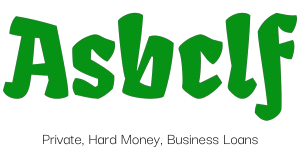Landlord Bailout Funding: A CASE STUDY
The following is A CASE STUDY of landlord bailout funding by way of a joint venture financial assistance program in order to get out from under a current and urgent financial issue or set back by Tod Snodgrass
A landlord owned a rental property. In 2021, during the COVID epidemic, tenants ceased paying rent since the government granted them a moratorium on paying during the epidemic. Once the epidemic had passed, the tenants were supposed to pony up what they owed in back rent. The government had also promised to help with makeup money to the landlord for missed rent payments.
Yet as with all landlords, this one still had to honor his monthly payment obligations (mortgage, taxes, insurance, utilities, etc.). The only good news is that the landlord had quite a bit of equity (40% or so) in the property that had built up over the years. In desperation, the landlord took out a three-year, second position loan with a private lender to tide himself over. He was counting on the nonpaying tenants to eventually cough up what they owed once the COVID crisis was over; same for the government makeup money. Unfortunately, he did not receive all the funds he was owed from either the nonpaying tenants or from the government. They both failed him in the end.
Fast forward three years to 2025. Due to recent health problems the landlord was experiencing, coupled with his inability to keep the property in tip-top shape, monthly rental income had started to decline over the past couple of years. The result is that he fell behind with his mortgage payments on both the first and second position loans.
Recently, the landlord received two NOD (Notice of Default) alerts: one from the holder of the second position note, the other NOD came from the bank holding the first position note. The landlord approached the bank and the private lender to open discussions about modifying the loans or maybe getting some time forbearance. Both lenders turned him down since his rental income was still not enough to meet his total monthly payment obligations. These issues, coupled with some other personal financial problems he was facing, caused his FICO score to take a tumble.
The landlord was tired and wanted out of the property. He considered selling it to get out from under all the current financial burdens and stress. However, he knew from years of experience that he did not have enough time to fix up the property, list it, wait for escrow to close, etc. He needed a short-term financial solution, or he could lose all his equity at the looming foreclosure auctions. The landlord reached out to a loan broker friend of his to try to arrange bailout funding. Considering all the problems facing the landlord, the broker reached out to our firm (CTF) to see what we could do to solve the landlord’s problems on a joint venture, 50/50 profit split basis, for funding with normal risk.
Job No. 1 was to find a way, and quickly, to get out from under the current and urgent financial issues facing the landlord. Once all the agreements (joint venture), etc. were signed between the landlord and CTF, we provided the funds–on a short-term basis, i.e. six months–needed to accomplish three things:
1. Pay off the first position loan.
2. Pay off the second position loan.
3. Provide money for a cosmetic fix up of the property, i.e. for painting and minor repairs.
Once the cosmetic rehab was finished, we recruited better tenants who were willing to pay higher rent. The property was put up for sale. It sold for top dollar, based on the higher “CAP rate” that resulted from recent rehab work.
Bottom line: In a little under six months, the weary landlord walked away with a bundle of cash, even after we paid off all encumbrances. Win Win!
Math Example for Landlord Bailout Funding
CTF provided funding on an Equity/Joint Venture (JV) basis with the landlord to pay off both loans and undertake a cosmetic rehab of the property, in trade for a share of the net profits (gross profit, less all expenses). CTF monetized its equity position by accepting a 6-month, 1st position, 14% interest rate note, face value: $800,000. Once the property sold, the landlord received his equity/profit. Details:
1. Total Payoff Cost (TPC) for both loans $500,000
2. Gross profit ($800,000-$500,000/TPC) $300,000
———–
3. CAP Rate Value After Cosmetic Fix up,
(confirmed by a recent appraisal and Scope of Work doc,
and this was also the eventual selling price of the property) $800,000
4. Current Fair Market Value (FMV) of the property $650,000
(confirmed by the same recent appraisal)
5. Total expenses:
(Closing costs, document preparation,
interest, cosmetic rehab costs and other
expenses mutually agreed to by both parties)
a. Interest amount landlord will need to
pay over the next six months, 7% x
$800,000 or $9,333/month $ 56,000
b. Note discount x 8% CTF must pay $ 64,000
to quickly sell the $800,000 note
c. Closing costs $ 5,000
d. Cosmetic rehab costs $ 25,000
———–
Total, #5 $150,000
6. TPC $500,000
———–
7. Total, #5 & #6 $650,000
8. Gross profit $150,000
($800,000-$650,000) ———–
$800,000
9. Net equity/profit to landlord, $75,000
(50% x $150,000 =
once the property is sold)
10. Net profit to CTF , $75,000
(50% x $150,000 =
1st Position note) ———–
$150,000
____________________________________________________________________________________
Free info pack.
If you would like CTF to send you free, detailed information, instructions, etc. about this landlord bailout funding program please send an email to creativetransactionfunding@gmail.com mention referral code ASBCLF and include your:
1. Full name
2. Phone number
3. Email address
Tod Snodgrass
President
Creative Transaction Funding LLC
2464 Rue Le Charlene
Rancho Palos Verdes, CA 90275

